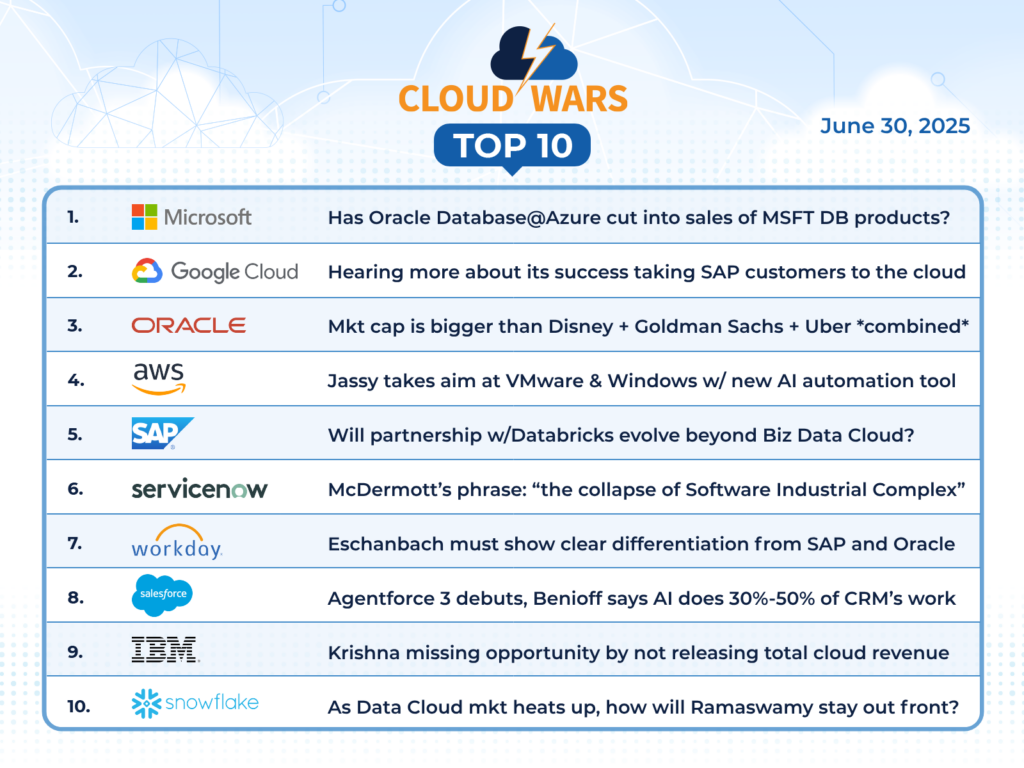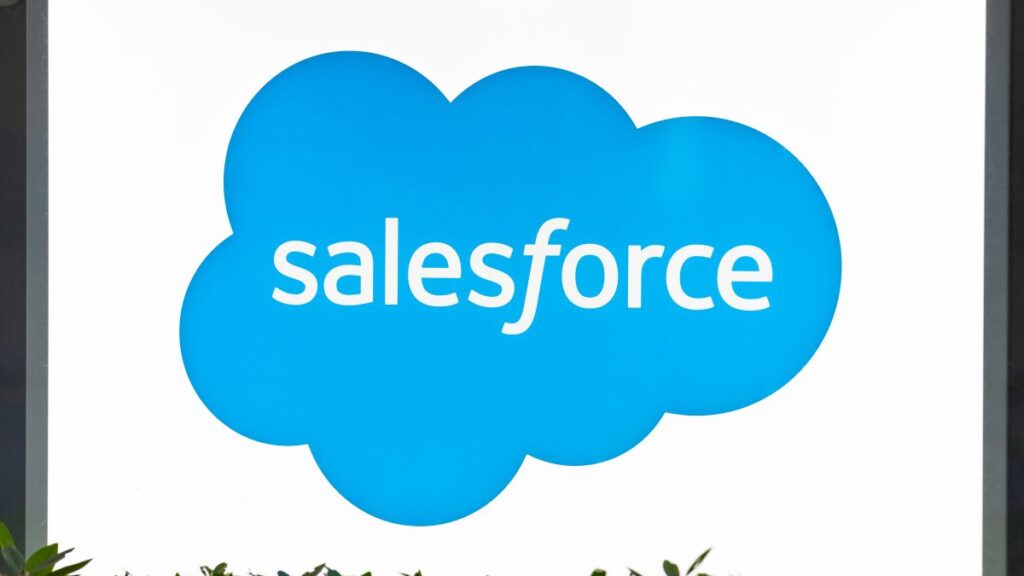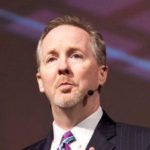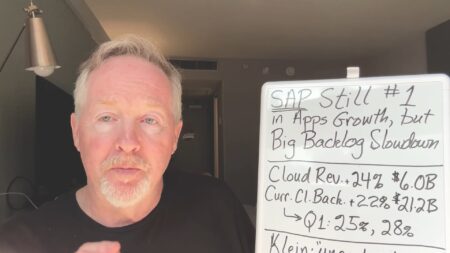
While I would rate Salesforce CEO Marc Benioff as one of the world’s top visionaries on the extraordinary potential of AI and particularly AI agents, I would also have to say that his basic math regarding AI’s impact within Salesforce simply does not add up and is full of holes.
Less than 10 months ago, Salesforce introduced its agentic-AI platform Agentforce with great fanfare around the idea that agents are “what AI was meant to be.” And while Benioff employed some of his trademark larger-than-life rhetoric with talk of the creation of billions of agents in a wildly short period of time, his vision for the business value that agentic AI can deliver was not only riveting but also galvanized his competitors to speak more ambitiously about agents’ ability to have enormous impacts on business outcomes.
Benioff’s articulation of the potential of agentic AI in general and Agentforce in particular jump-started what is surely becoming one of the most-momentous step-changes in not just the history of enterprise tech but of global business as well. And for that, he deserves enormous credit.
But then there’s the math thing.
My quibble with Benioff’s numbers isn’t his fairly loose references to billions of agents — I think that’s part of his persona, and that anybody putting even a little thought into it translated that to mean “lots and lots of agents, and probably more than anyone right now can imagine.” His strategic point was that the worst mistake a CEO today can make is to get caught short on a business-tech revolution that will happen incredibly fast.
No, my concern about Benioff’s math is centered in a claim he made last week about the impact AI is having — right here and right now — on Salesforce’s business. Here’s the key excerpt from an interview Benioff did last week with Bloomberg’s Emily Chang as they discussed the impact AI is having within Salesforce:
[Benioff] “I just had a meeting with my head of engineering and we’re looking at productivity levels of 30% to 50% in key functions like engineering, coding, support, service–“
[Chang] “You’re saying AI is doing 30% to 50% of the work?”
[Benioff] “AI is doing 30% to 50% of the work at Salesforce now. And I think that will, you know, continue.”
Now, if we isolate exclusively on that exchange, it’s easy to see why it has generated extensive media coverage: up to half of the work inside one of the world’s largest and best-known software companies is being done by AI!!
That’s not just surprising — that’s absolutely shocking.
But let’s unconditionally concede the point to Benioff that at least one-third and perhaps up to half of all the work currently being done in Salesforce is being done by AI. Think about that: Perhaps half of all the work currently being done in Salesforce is being done by AI!!
Well, when I think about that, one of my follow-up thoughts is a bit disturbing: In light of the workload Salesforce’s AI has taken on, there must be a whole lot of human-type workers inside Salesforce with a whole lot of free time on their hands. For me, that’s where Benioff’s numbers and his description of AI’s impact just don’t add up.
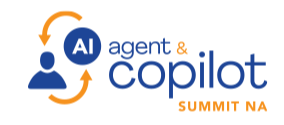
AI Agent & Copilot Summit is an AI-first event to define opportunities, impact, and outcomes with Microsoft Copilot and agents. Building on its 2025 success, the 2026 event takes place March 17-19 in San Diego. Get more details.
Fuzzy Math
According to the Salesforce website, the company has 76,000 employees as of April 2025. But if one-third or one-half of all the work is now being done by what Benioff calls digital labor or digital workers, then how are those 76,000 people filling up their days?
In February, there were widespread news reports that Salesforce had shed 1,000 employees as a result of AI’s impact, and that at the same time it added a significant number of salespeople to pursue the enormous AI opportunity. So, with this new 30%-50% revelation, should we expect to see that Salesforce is going to lay off, say, 10% of its workforce, which would be 7,600 people?
Or 15%, which would be 11,400 people?
Using Benioff’s math, even a layoff of 25% of its workforce (19,000 people) would still leave Salesforce with a big cushion of labor capacity versus productivity.
What Benioff Didn’t Say
Now, Marc Benioff is a brilliant guy and a fabulous leader who’s done things over the past quarter-century that very few CEOs in any industry have ever achieved. So I have zero doubt that he and his team have mapped out all these contingencies very thoughtfully and precisely — but in my opinion, it was a big mistake for him to lay out that astonishing 30%-50% number without discussing in any way how the company will adapt to that new productivity reality.
The easy answer is layoffs — and that also might very well be the stupidest and worst-possible answer. How do the 76,000 “human workers” within Salesforce now reassess what they do with AI doing up to half of the work that used to be done?
How do the company leaders think about and create their new future in what is quite literally already an AI-powered company? In the interview with Chang, Benioff made a minor and generic reference to that by saying, “All of us have to get out heads around this idea that AI can do things that, before, we were doing, and we can move on to do higher-value work.”
Final Thought: The Flimsiness of the Phrase “Higher-Value Work”
Over the past 18 months, I have heard that well-meaning but empty phrase “higher-value work” several hundred and perhaps even thousands of times from tech executives as well as those in other industries as they wade into the discussion of what humans will be freed up to do as AI systems take hold. But almost no one ever describes in any detail whatsoever what, exactly, that “higher-value work” includes.
Well, I say it is time to bury that flimsy formulation and begin digging into exactly what that new human-digital work environment looks like.
And I hope Marc Benioff — as he has done many times across the last 25 years — jumps into the breach and brings some clarity to this profoundly important issue.
Because, in the absence of that clarity, we are left with the mathematical conclusion that Salesforce is employing 30% to 50% more humans than it actually needs.
